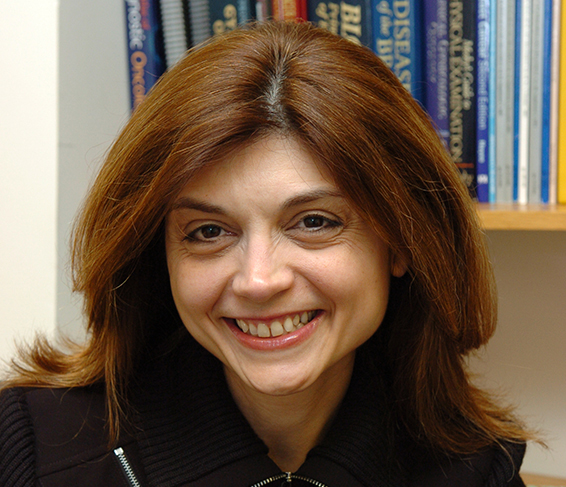Key Takeaways:
- Endometrioid and non-endometrioid uterine cancer are distinguished by the features of the tumor cells when viewed under a microscope.
- Increasingly, the genomic features of the tumor cells are a factor in how uterine cancers are classified and treated.
Uterine cancer — also known as endometrial cancer — has traditionally been classified as endometrioid or non-endometrioid based on the appearance of the tumor cells under a microscope. Now, as scientists learn more about the molecular makeup of the disease, uterine cancers are increasingly identified by the specific genetic alterations within them.
Endometrioid uterine tumors account for most of the more than 60,000 new cases of uterine cancer diagnosed in the United States each year. They are fueled by estrogen, which places individuals with obesity and/or diabetes at higher risk for them. Non-endometrioid uterine cancers are genomically diverse, marked by different genetic changes, and are often aggressive.
All varieties of uterine cancer tend to arise after menopause: most patients are in their 50s, 60s, or beyond. In most cases, post-menopausal vaginal bleeding is the first symptom of the disease. (Such bleeding can be caused by a variety of conditions. If it occurs, individuals should schedule an exam with their doctor.)
Endometrioid uterine cancer subtypes
The major subtypes of endometrioid uterine cancer are defined by genetic features of their cells, such as:
- A mutation in the POLE gene. These tumors, which account for about 7% of endometrioid uterine cancers, are marked by a large number of genetic mutations. They often respond to immunotherapy and have a good prognosis.
- A high degree of “microsatellite instability,” meaning the tumor cells have lots of mutations in short stretches of DNA known as microsatellites. Accounting for about 30% of endometrioid ovarian cancers, these cancers tend to be very responsive to immunotherapy.
- Microsatellite stability, meaning the repeated letters of DNA within tumor cell microsatellites are the same as within normal cells. These cancers respond to immunotherapy and a drug known as a VEGF inhibitor.
- High copy number – meaning certain genes and sections of DNA are duplicated many times over. These tend to be the most difficult to treat.
Non-endometrioid uterine cancer subtypes
The major ones are:
- Papillary serous cancers. Researchers are exploring the effectiveness of the drug herceptin and drugs known as cyclin B1 inhibitors against these aggressive cancers.
- Clear cell tumors. Studies of immunotherapy combinations are under way for patients with these very aggressive cancers.
- Carcinosarcomas. These tumors, too, are highly aggressive. Clinical trials are exploring whether drugs targeting the HER2 protein can be helpful in some patients.
Treatment for uterine cancer is geared to the type, subtype, and stage of the tumor (how advanced the cancer is). Increasingly, the genetic makeup of a tumor also plays a role in treatment.
Research into uterine cancers
In recent years, uterine cancer has become an especially active area of research, both in the lab and in the clinic. At Dana-Farber and other cancer centers, a wide range of clinical trials is underway to identify the best treatments for patients with specific types of the disease.
Among the trials under way at Dana-Farber are:
- A trial of a targeted therapy known as a Wee1 inhibitor in patients with recurrent or persistent uterine serous cancer or uterine carcinoscarcoma.
- A trial of the antibody-based drugs mirvetuximab and pembrolizumab in patients with microsatellite stable recurrent or persistent uterine cancer.
- A trial of the antibody drug avelumab in patients with microsatellite-stable or microsatellite-instable uterine cancer harboring a POLE mutation. A second stage of the trial is testing avelumab and talazoparib, a drug that impairs cancer cells’ ability to repair damaged DNA, in patients with microsatellite-stage uterine cancer.
- A trial of abemaciclib, a drug that interferes with cell-division cycle in tumor cells, in combination with other drugs for treating recurrent or persistent endometrial cancer.
About the Medical Reviewer

Dr. Campos received her MD from Georgetown University in 1992, and then completed residency training at Georgetown Medical Center. Between 1995 and 1998, she completed a fellowship in hematology-oncology at Brigham and Women's Hospital, in Boston, and in 2000 received her MPH from Harvard Medical School. She serves on committees for the American Society of Clinical Oncology, the Gynecological Oncology Group, and the National Comprehensive Cancer Network. She is board-certified in internal medicine, oncology, and hematology.
